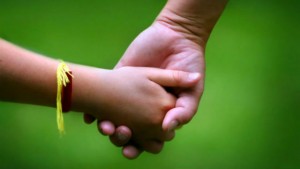Home » Commentary » Opinion » Nyland report misrepresented those calling for increase in adoptions
· Quadrant

 Will the Northern Territory Royal Commission into the Don Dale scandal and the relevant issues pertaining to youth detention get to the root cause of the problem: the flawed child protection practices that damage children and leave them prone to criminal and other anti-social behaviours?
Will the Northern Territory Royal Commission into the Don Dale scandal and the relevant issues pertaining to youth detention get to the root cause of the problem: the flawed child protection practices that damage children and leave them prone to criminal and other anti-social behaviours?
Going by the recommendations of the latest similar inquiry — South Australia’s Nyland Royal Commission into child protection, which reported last week — the most likely outcome is a multi-million dollar exercise in defending the indefensible status quo; while shooting the messengers who argue that things must be done differently to achieve different outcomes.
Take the way the Nyland report has grossly misrepresented the position of those calling for an increase in adoptions to address the nation’s child welfare crisis.
More adoptions are necessary not only to rescue maltreated children from dysfunctional families, but also to save them from the child protection systems that fail them in all states and territories.
But according to Commissioner Nyland, adoption advocates supposedly fail to understand that many — probably most — of the children who end up in long-term foster and other forms of out-of-home care are damaged and ‘un-adoptable’ because of their behavioural, psychological and other problems.
This claim is false. Supporters of greater use of adoption have long argued that giving children safe and stable adoptive families must occur in conjunction with dramatic changes to frontline child protection practices; so children are removed earlier and permanently from shocking homes — before they are damaged by the trauma experienced both at home and while in care.
The Royal Commission has inexplicably downplayed the forensic, and widely reported, findings of the 2015 inquest into the death of four-year-old Chloe Valentine. South Australian Coroner Mark Johns found that Chloe died because Families SA was obsessively focused on doing everything it could to keep the appallingly abused child with her neglectful mother.
All Australian child protection services practice ‘family preservation’ at almost all costs, and only remove children as a last resort.
Despite being reported multiple times because of safety concerns, children are left with even highly dysfunctional parents — such as Chloe’s mother — who have serious drug and alcohol, domestic violence and other social problems.
The parental abuse and neglect that children are exposed in the name of family preservation is the reason there are so many damaged children among the more than 43,000 children currently in care nationally. The damage done by parental mistreatment is then compounded as children are churned in and out of care as family restorations are repeatedly attempted and repeatedly breakdown.
A child protection system that profoundly damages children is, by definition, a failed system that requires root-and-branch pro-adoption cultural change by putting the best interests of children first — not the interests of parents demonstrably incapable of looking after children properly.
Rather than taking up the true reform challenge to ensure children are saved rather than continue to suffer, the Nyland Report adopts a blasé attitude to the fate of children failed by the system.
The report claims that calls for more adoptions are impractical, while admitting that the reason adoptions are likely to break down is “as a result of extreme behaviour of children relating to their earlier mistreatment.”
Instead of calling for the scrapping of harmful family preservation policies — as logic and common sense would suggest — Commissioner Nyland is content to recommend traumatised children with no chance of returning home be placed into long-term guardianship care, with no mention of addressing systemic problems that cause the trauma. This amounts to recommending that foster care continue to be used as a dumping ground for the children failed and damaged by the system.
Calls for more timely adoptions may sound like an extreme policy to the uninitiated. This is of course an awesome intervention by the state into the lives of children and parents. But the solution is in proportion to the scale of the problems with the current child protection set up — which mean that the state agencies charged by statute with protecting children permit, rather than prevent, child abuse and neglect in tens –of –thousands of cases.
I’ve described the child protection system in Australia as ‘mad’ based on the old saying that the definition of madness is doing the same thing and expecting a different result. The truth of that has unfortunately been proven by the Nyland Report, which is a nothing less than a blueprint for perpetuating the flawed — and sometimes fatal — status quo in child protection.
Let’s hope the Northern Territory Royal Commission does a better job. But that is shy hope in the extreme. What we really need is for governments to commit to a genuine reform policy — as distinct from a ‘process’ — that has increasing the number of adoptions at its centre.
Jeremy Sammut is a Senior Research Fellow at The Centre for Independent Studies and author of The Madness of Australian Child Protection: Why Adoption Will Rescue Australia’s Underclass Children.
Nyland report misrepresented those calling for increase in adoptions